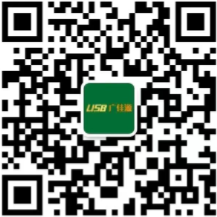 Mr. Chen:136-6225-2835
Mr. Chen:136-6225-2835
 Miss Chen:189-2385-0895
Miss Chen:189-2385-0895
Shenzhen Guangjiayuan Electronic Technology Co., Ltd
Mr. Chen: 136-6225-2835 (same WeChat account)
QQ: 979285705
Miss Chen: 189-2385-0895 (same WeChat account)
QQ: 2391552662
Chen Weiting :135-3824-4786 (same WeChat account)
Chen Weihao: 139-2459-4393 (same WeChat account)
Tel: 86-0755-33182327
Email: gjydz88@163.com
Website: www.usb-type.com
Address: Building 10, Hongxing Gebu Qixiang, Songgang Town, Bao'an District, Shenzhen, Guangdong Province
Currently, USB 3.0 has become very popular, and many users of USB 3.1 are confused by the parameter descriptions when purchasing products. Because USB has undergone too many upgrades, there are various divisions within each important upgrade. This article will elaborate on the differences in versions of USB 3.1 for easy selection.
There are two versions of USB 3.1 on the market: Gen1 and Gen2. Compared to USB 3.0, the maximum transmission speed of the new USB 3.1 has been increased to 10Gb/s, while USB 3.0's maximum transmission speed is only 5Gb/s. And USB 3.1 supports more flexible charging, with a power supply current that can significantly increase from 1.5A to 3-5A, resulting in higher performance and faster charging.
1、 Who is the real USB 3.1
So the challenge arises, what is the difference between the two versions of USB 3.1? Actually, you can remember the following sentence first: usb3.1 Gen1 is usb3.0. USB 3.1 Gen2 is the true USB 3.1.
The biggest difference between usb3.1 Gen1 and Gen2 is the transmission rate: the maximum transmission rate of usb3.1 Gen1 can reach a theoretical bandwidth of 5Gb/s; The maximum transmission rate of USB3.1 Gen2 can reach a theoretical bandwidth of 10Gb/s. In fact, some manufacturers now claim to support the USB 3.1 standard for devices, but they only use USB 3.1 Gen1, which was previously known as USB 3.0. It's just a replacement vest, so when choosing, it's important to recognize that USB 3.1 is the Gen2 version.

USB 3.1 type-c Gen 2 M/M 10 Gbps, please also mention USB 3.2. With the increasing popularity of USB type-C, the USB-IF Association has decided to completely abandon the outdated and poorly functional USB type-a and USB type-b interfaces on USB 3.2, and fully promote USB type-C.
In the USB 3.2 specification, the high-speed characteristics of USB type C are fully utilized. USB type C has two high-speed data transmission channels, named (TX1+/TX1-, RX1+/RX1-) and (TX2+/TX2-, RX2+/RX2-).
In USB 3.2, both channels can be enabled under appropriate circumstances, and the maximum transmission speed of 10Gbps for each channel can be achieved. The total is 20Gbps. With 128b/132b encoding, the actual data speed can reach about 2500MB/s, which is directly doubled compared with the current USB 3.1.
But then, as everyone knew, USB 4 immediately appeared, and besides the interface style, everything underwent a major change.
2、 The various versions of the type-C interface, as one of the USB interfaces, also inherit the various "confusions" of USB, because the type-C cable you may receive is also a functional "defective product".
The USB-IF Association has launched type-c to address the inconsistency in USB interface specifications. Its full name is the USB type-c interface, which is actually a physical hardware interface form of USB. Before type-c, of course, there were also type-a and type-b interfaces.
After the release of Type-C, there has been a trend of various functions almost unifying the world. However, to achieve Type-C data transmission, audio and video output, charging, and other functions, corresponding interface transmission protocols need to be supported.
On the type-c carrier, the most common interface transfer protocols are the USB X.X version and Thunderbolt3 (Thunderbolt 3) protocols. This also brings us back to the first part of USB 3.1. Due to different versions, the experience varies greatly. The same is the type-c interface, where one can only be charged using the type-c interface, while the other can use the type-c interface to connect four 4K monitors or graphics card docks externally, with varying scalability.
So far, although type-C has almost dominated the development, it may not have truly exhausted all functions, which also leaves opportunities for other interfaces to wait for upgrades and compete more with type-C interfaces.
Source: Lcom Norton
Contact person:
Mr. Chen 136-6225-2835 (same WeChat account)
Miss Chen 189-2385-0895 (same WeChat account)
Chen Weiting 135-3824-4786 (same WeChat account)
Chen Weihao 139-2459-4393 (same WeChat account)
Address:
Building 10, Hongxing Gebu Qixiang, Songgang Town, Bao'an District, Shenzhen, Guangdong Province
 |
 |
| Technology 1 | Technology 2 |